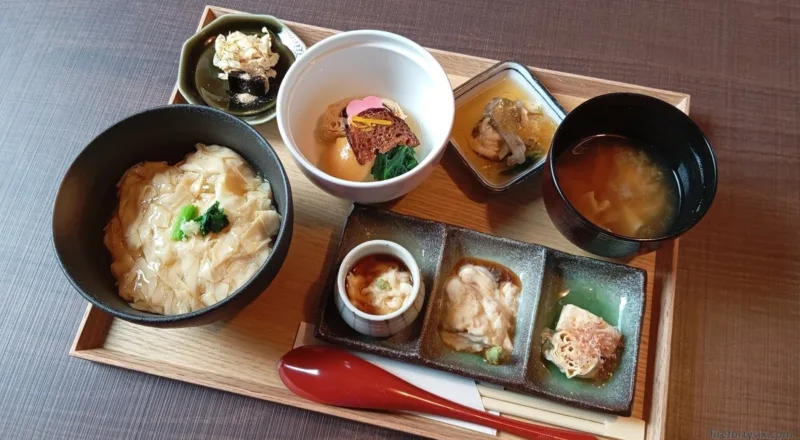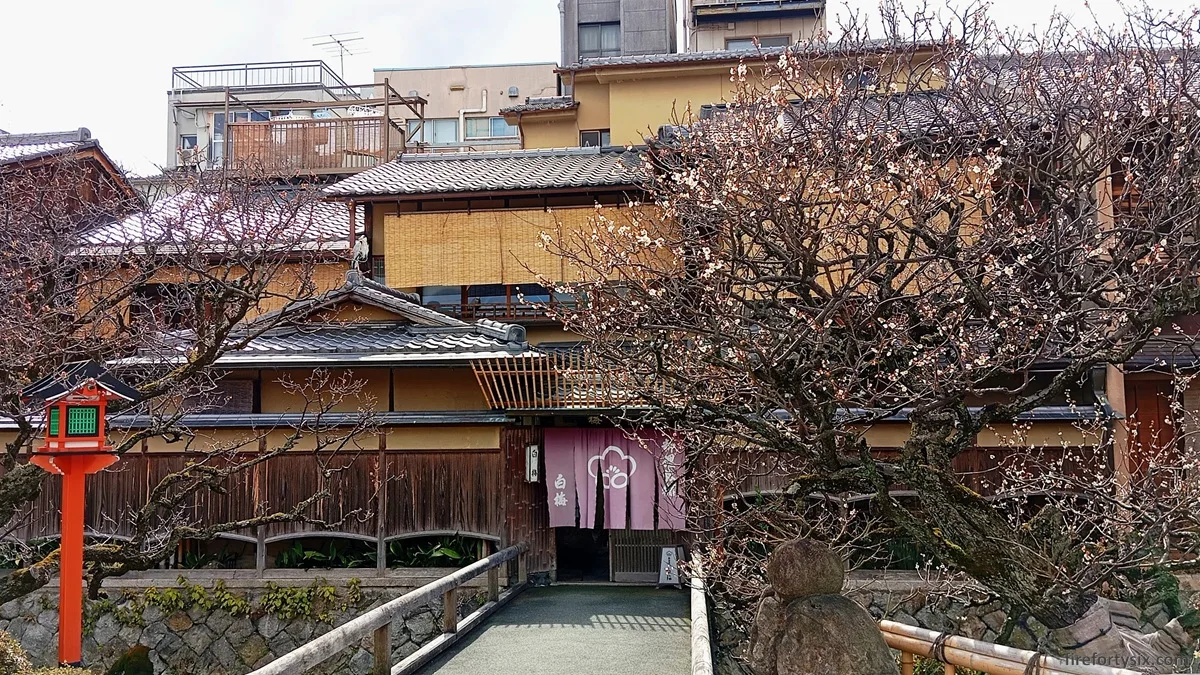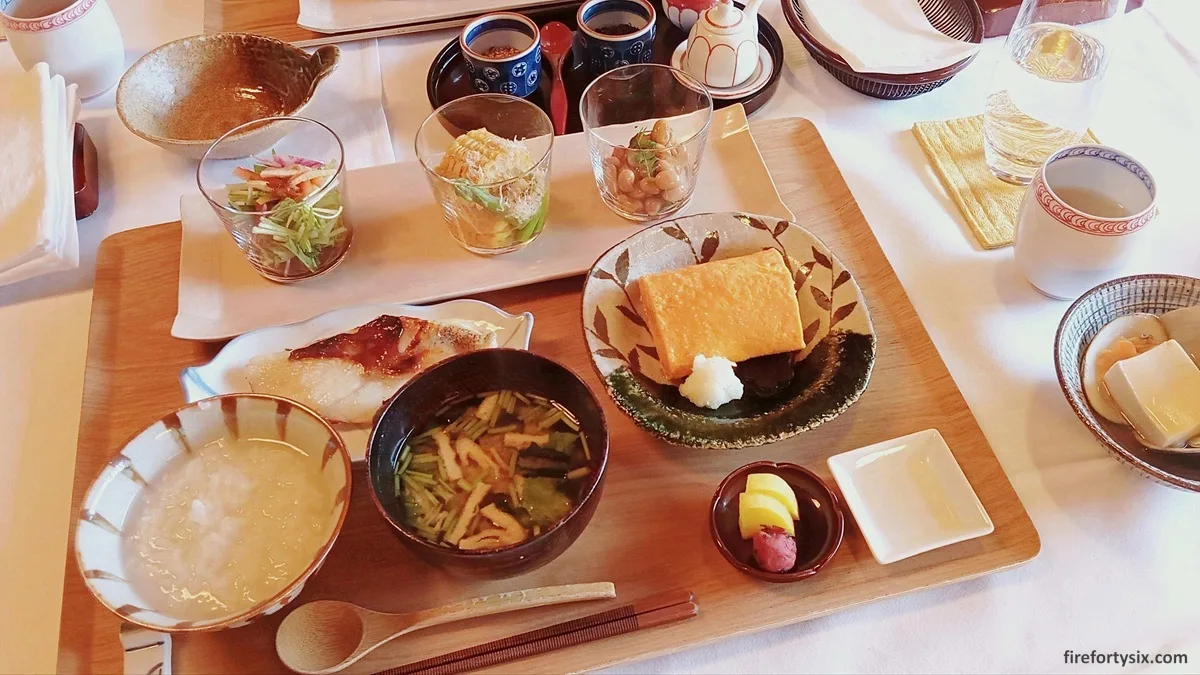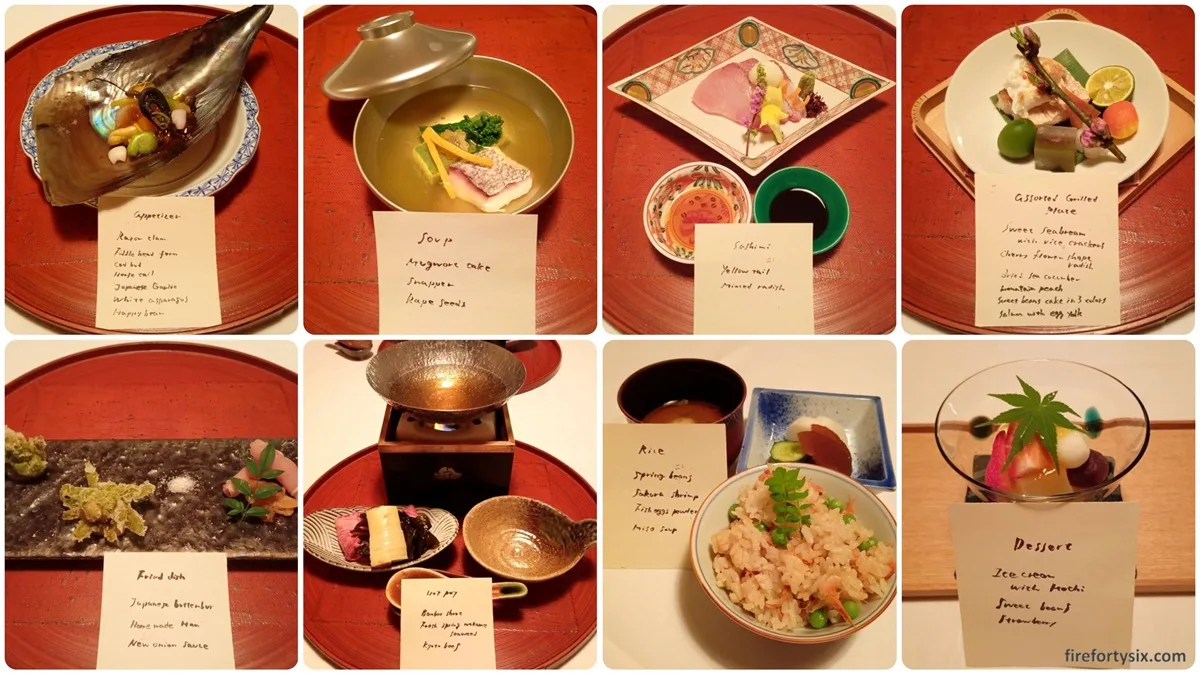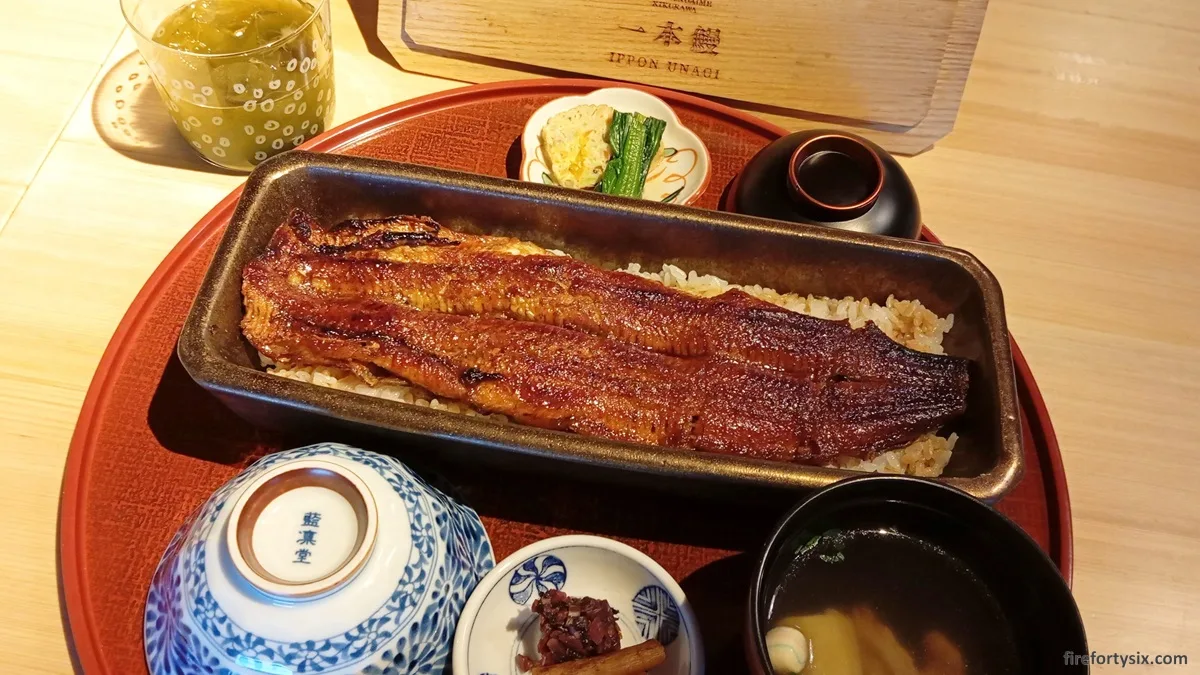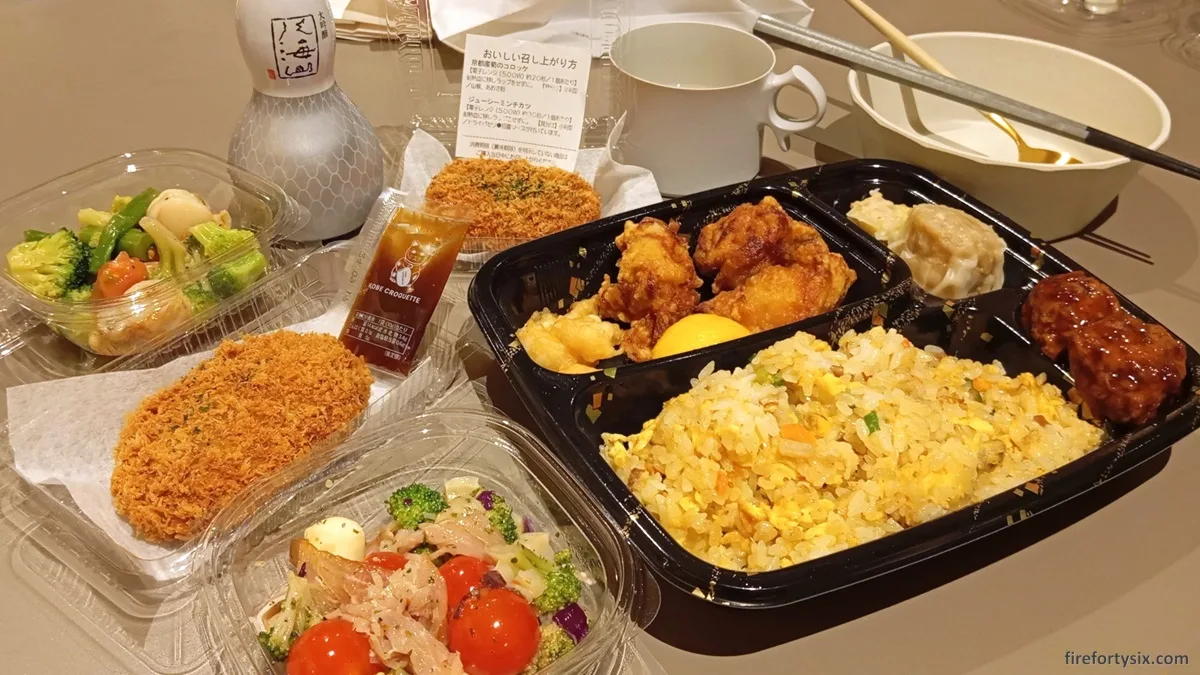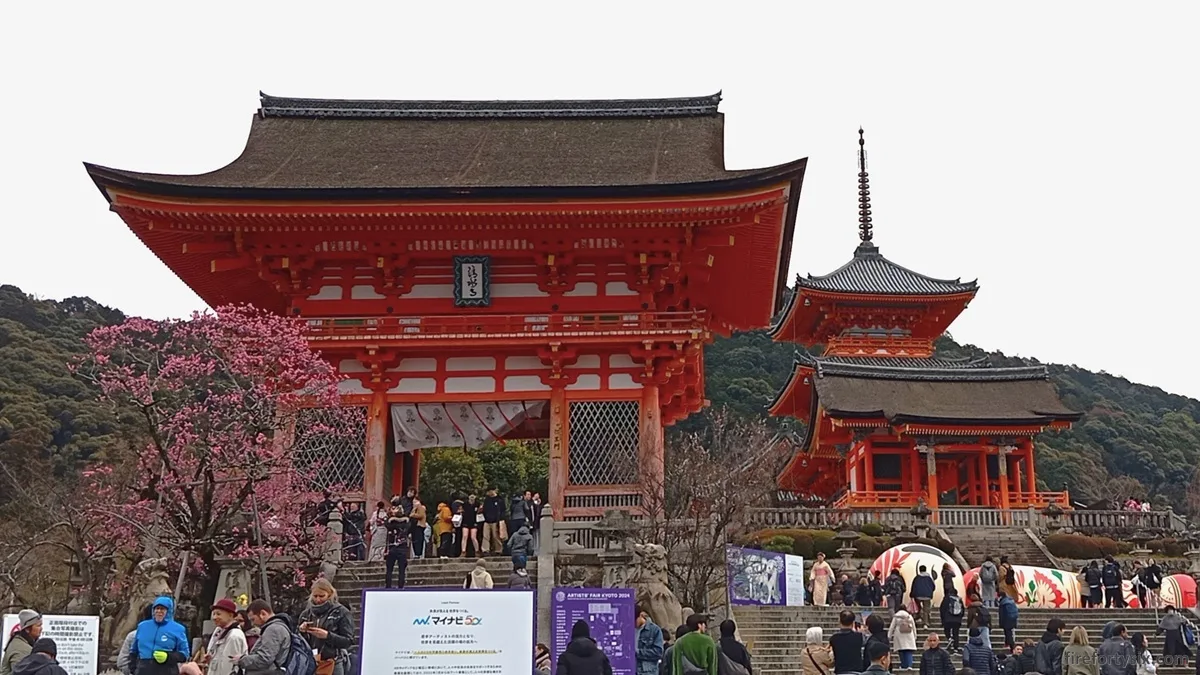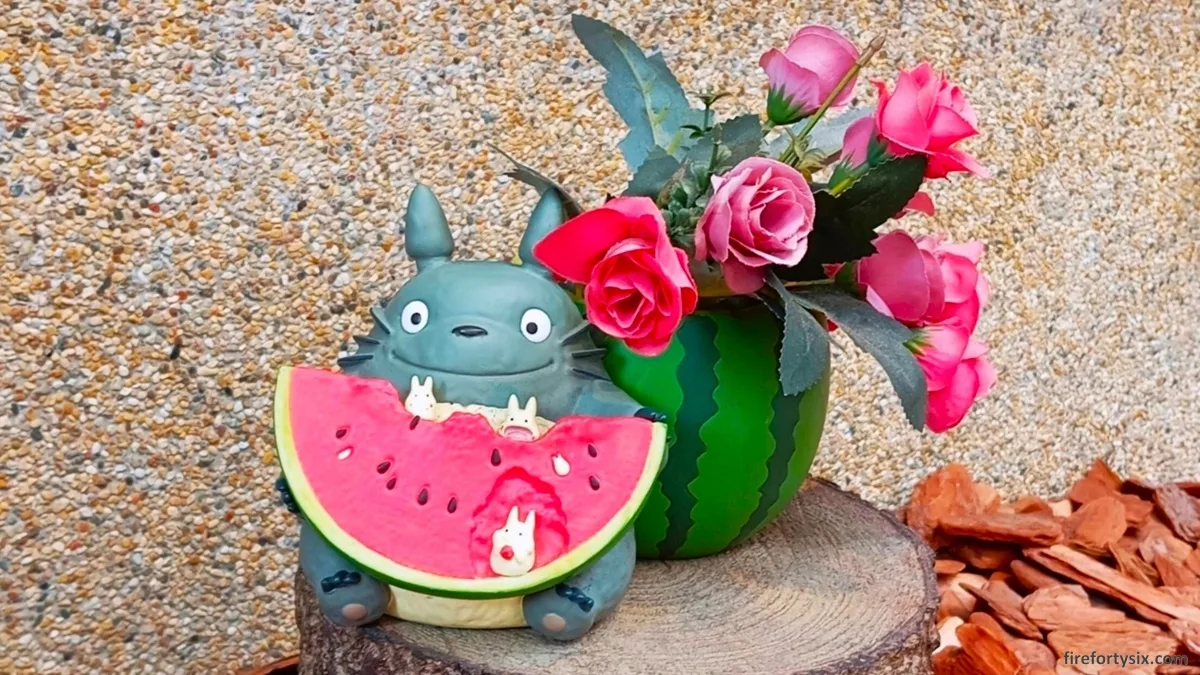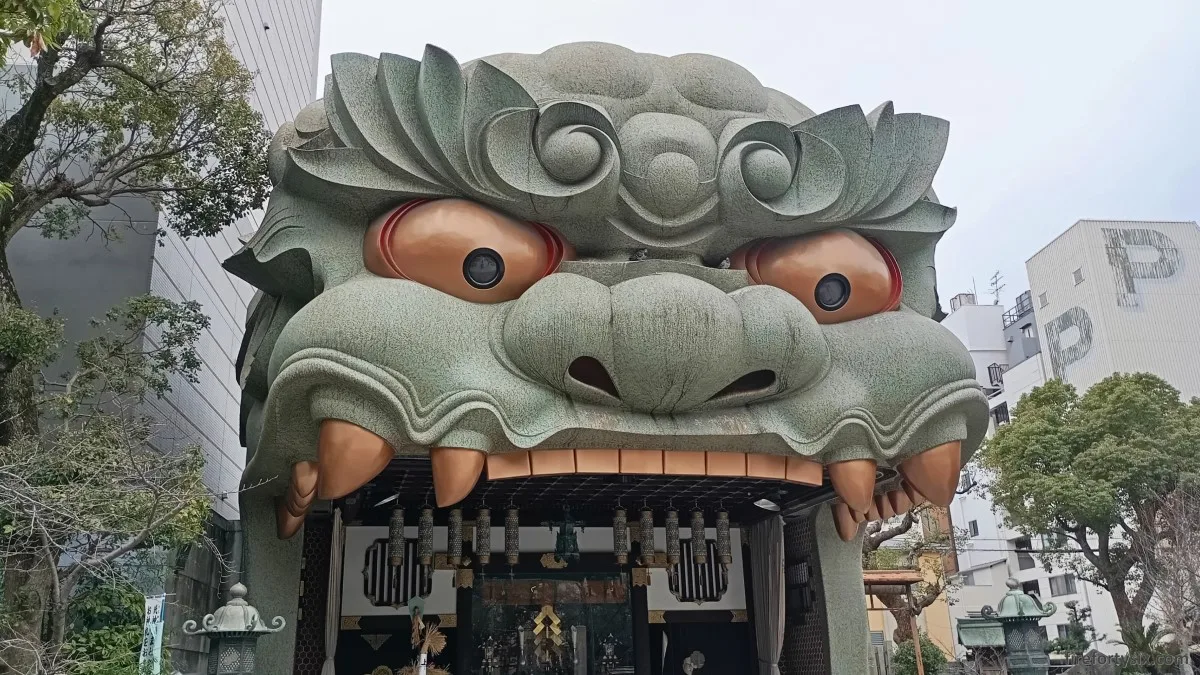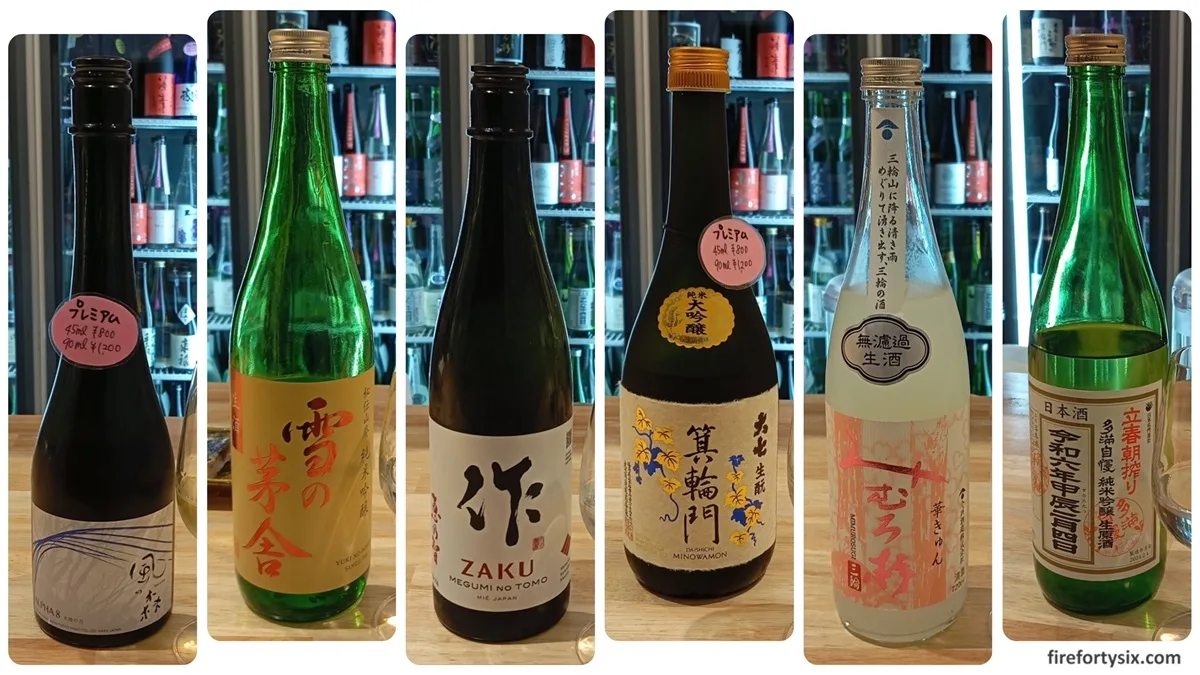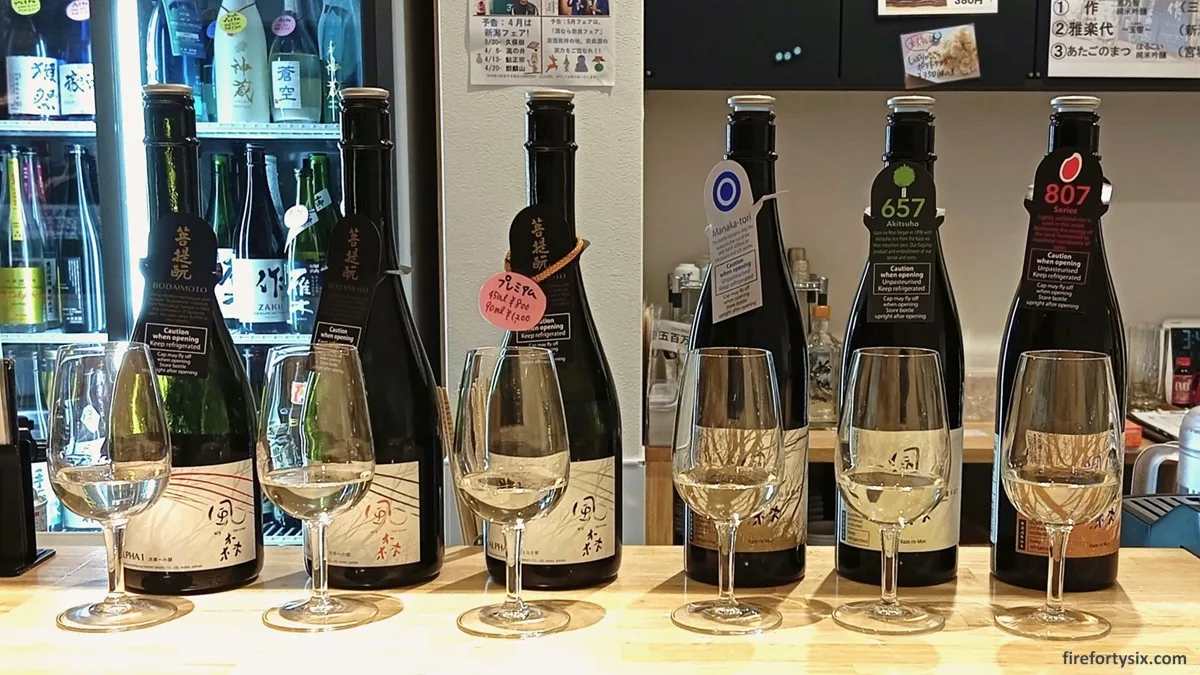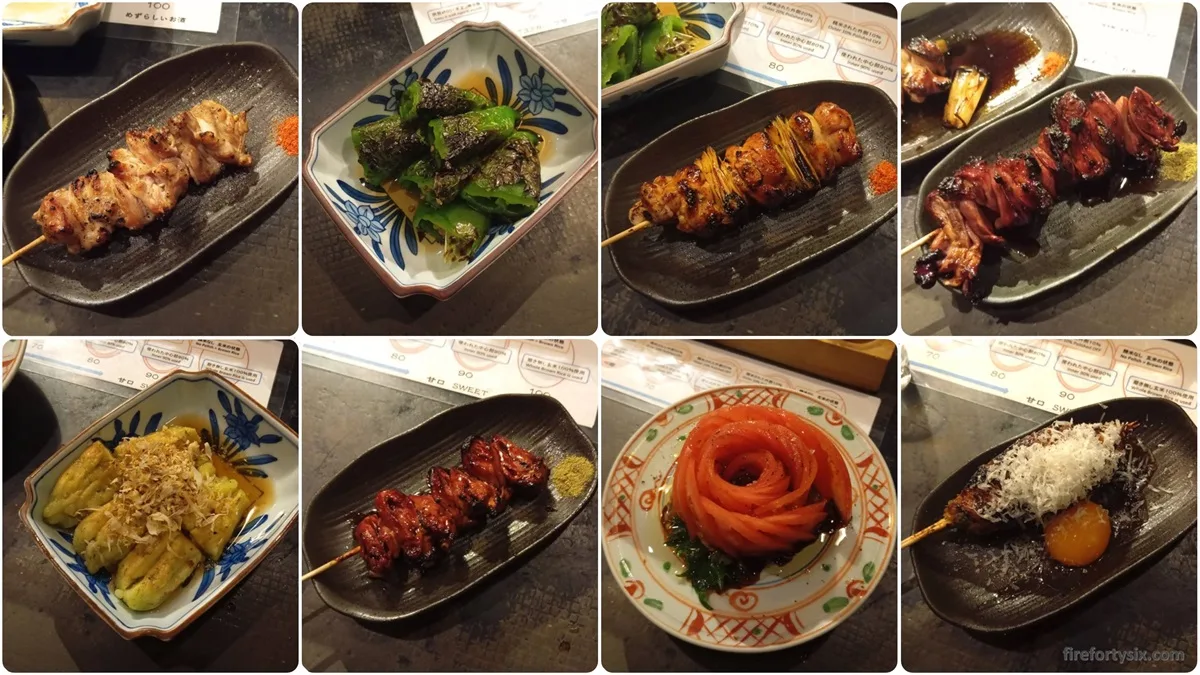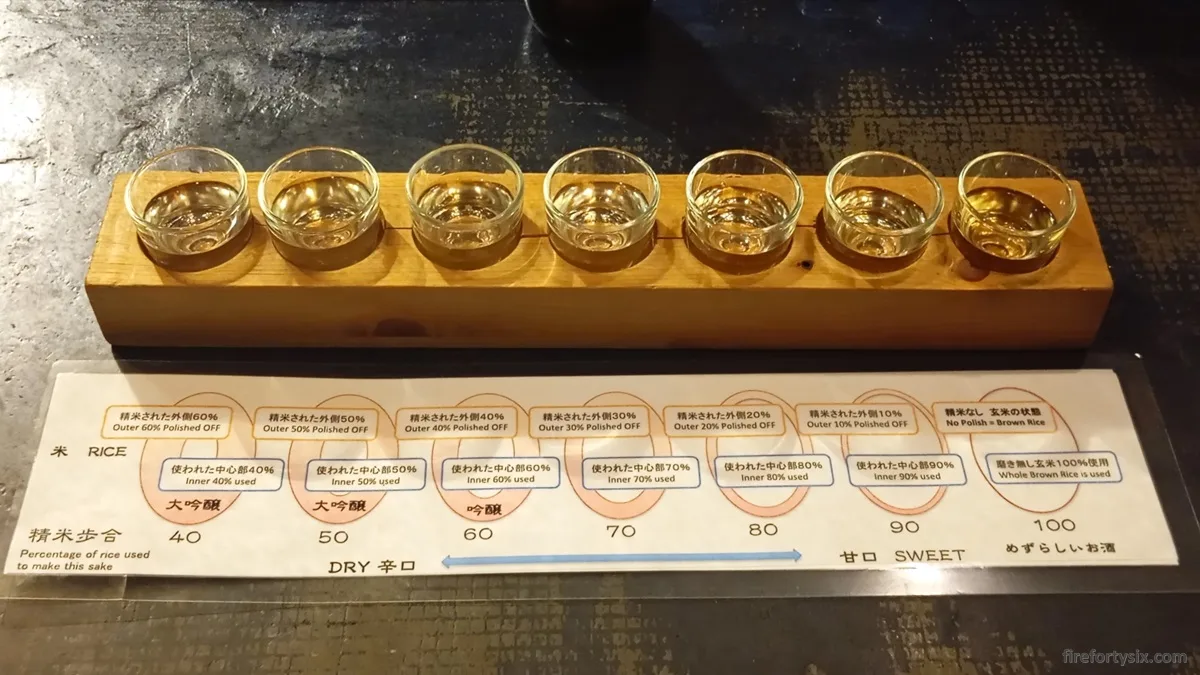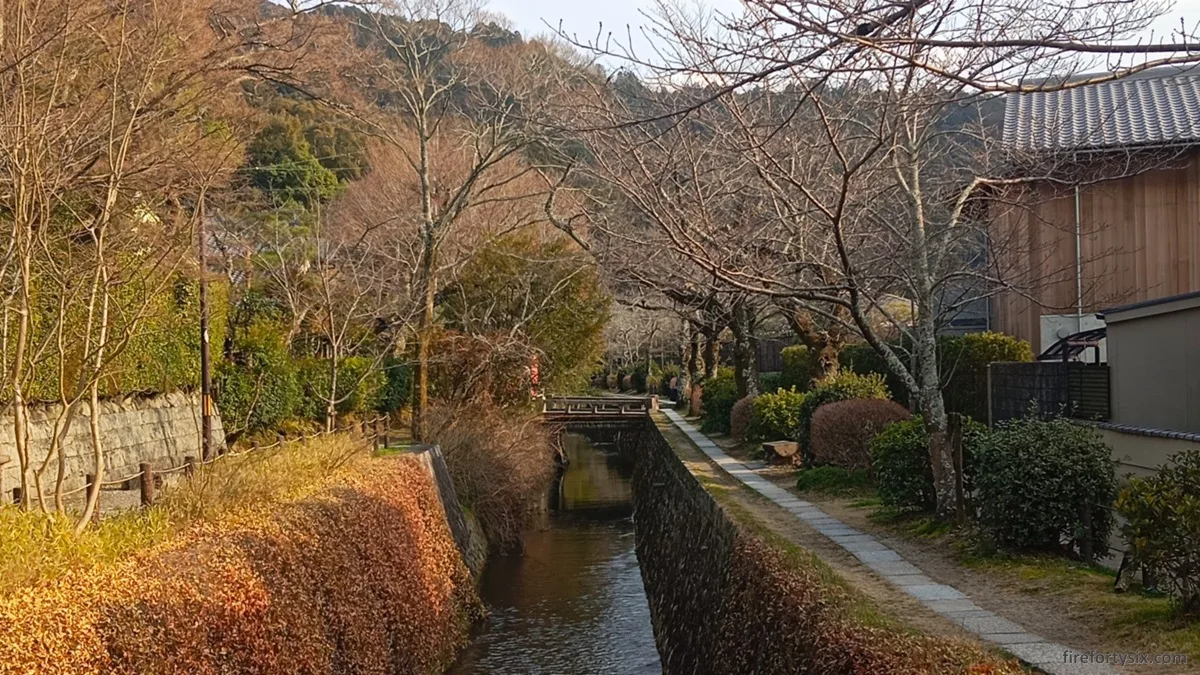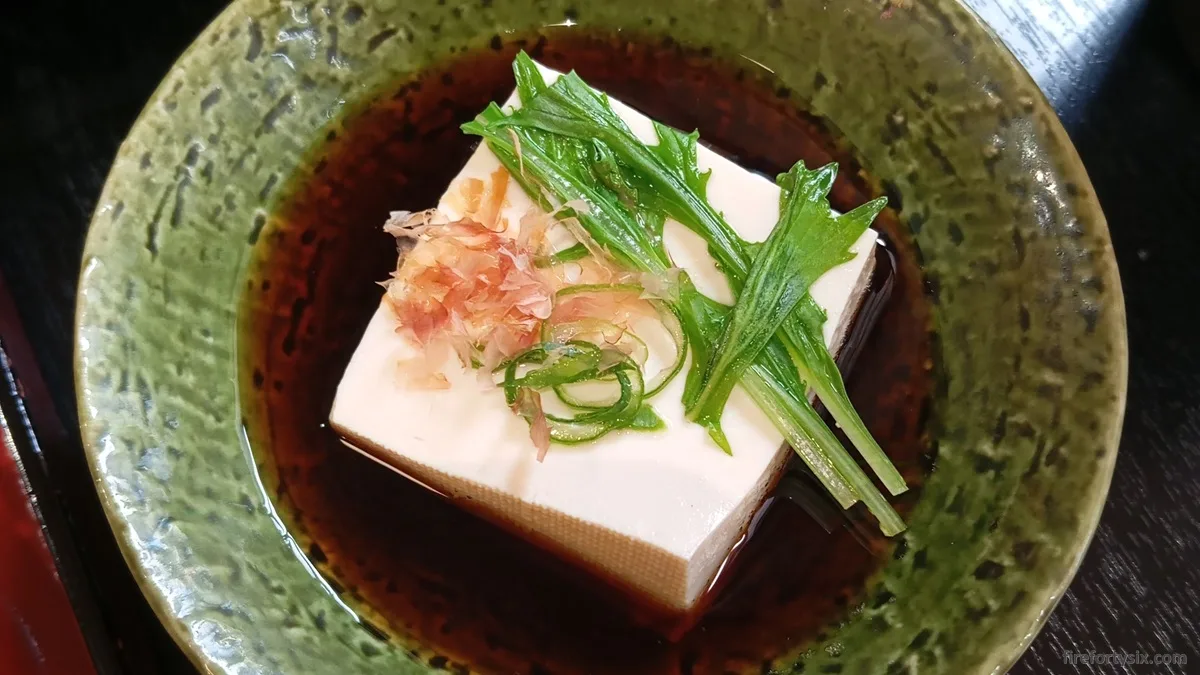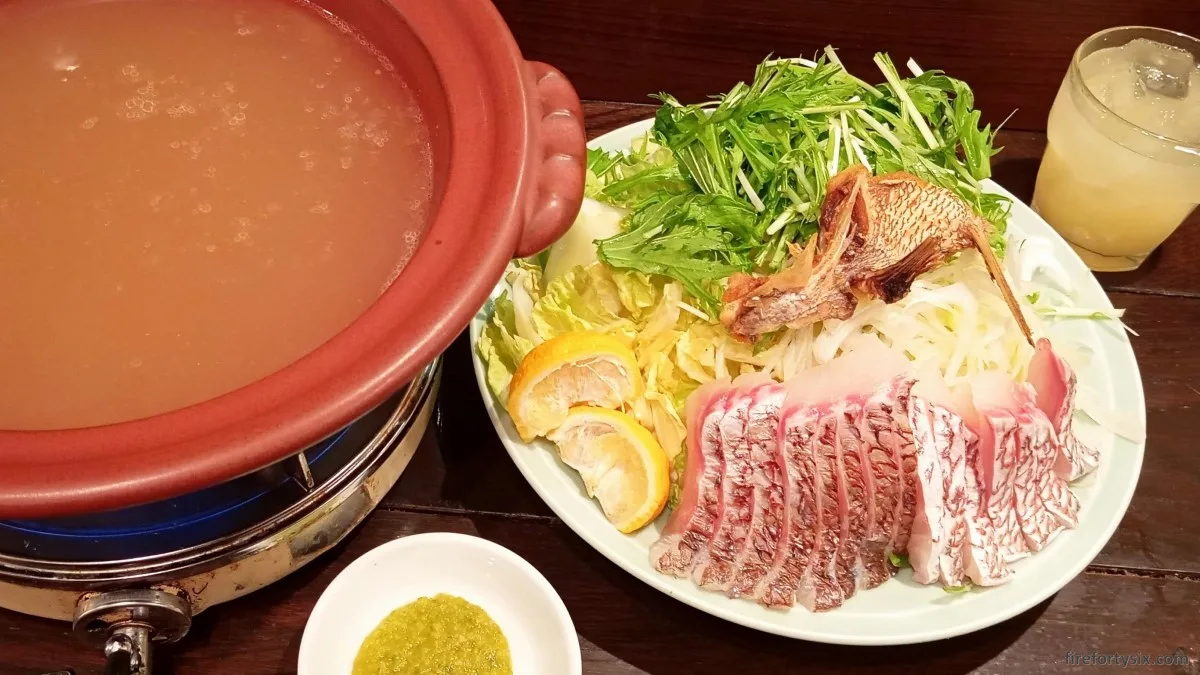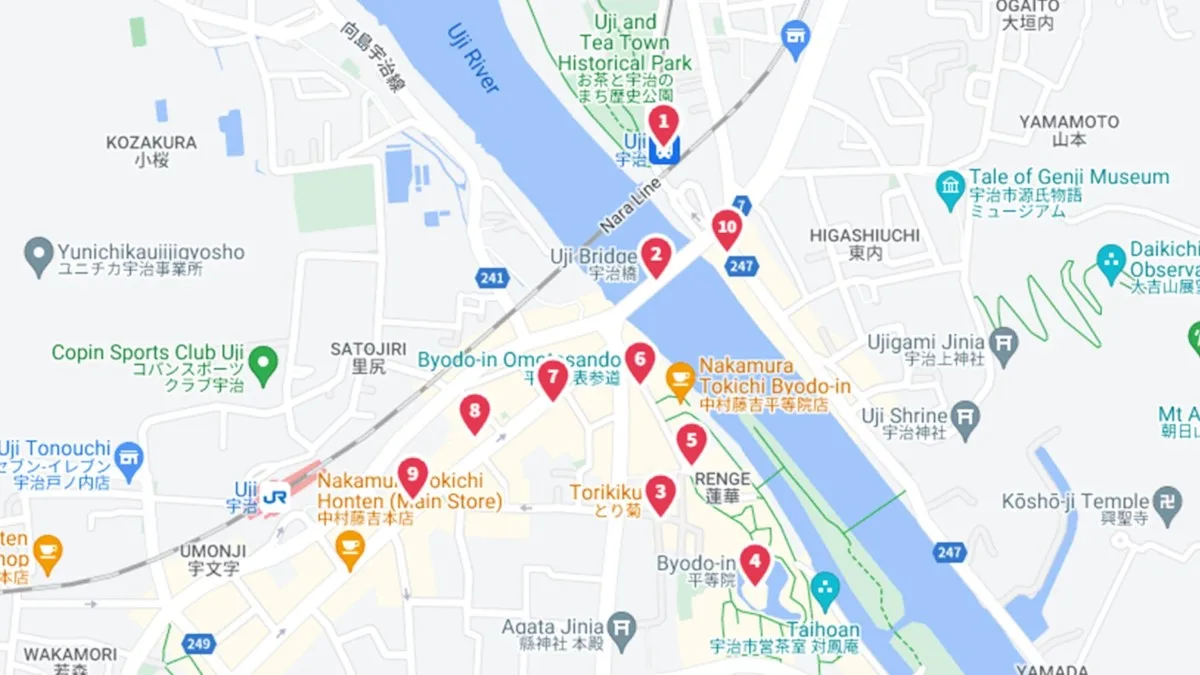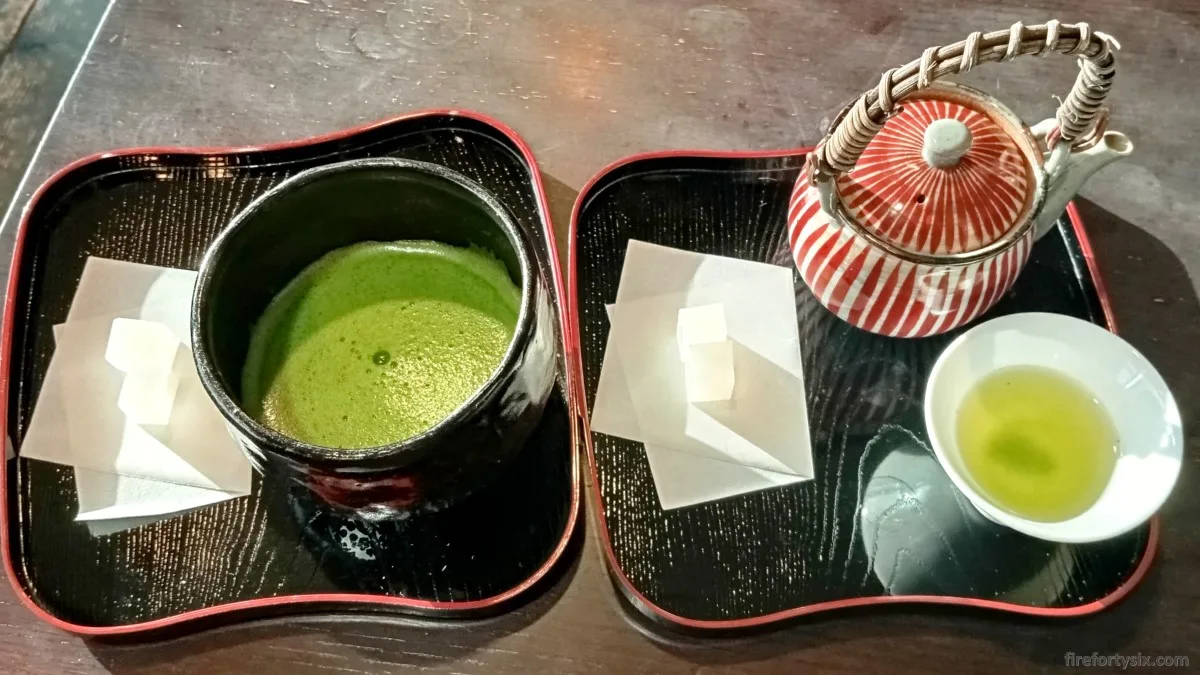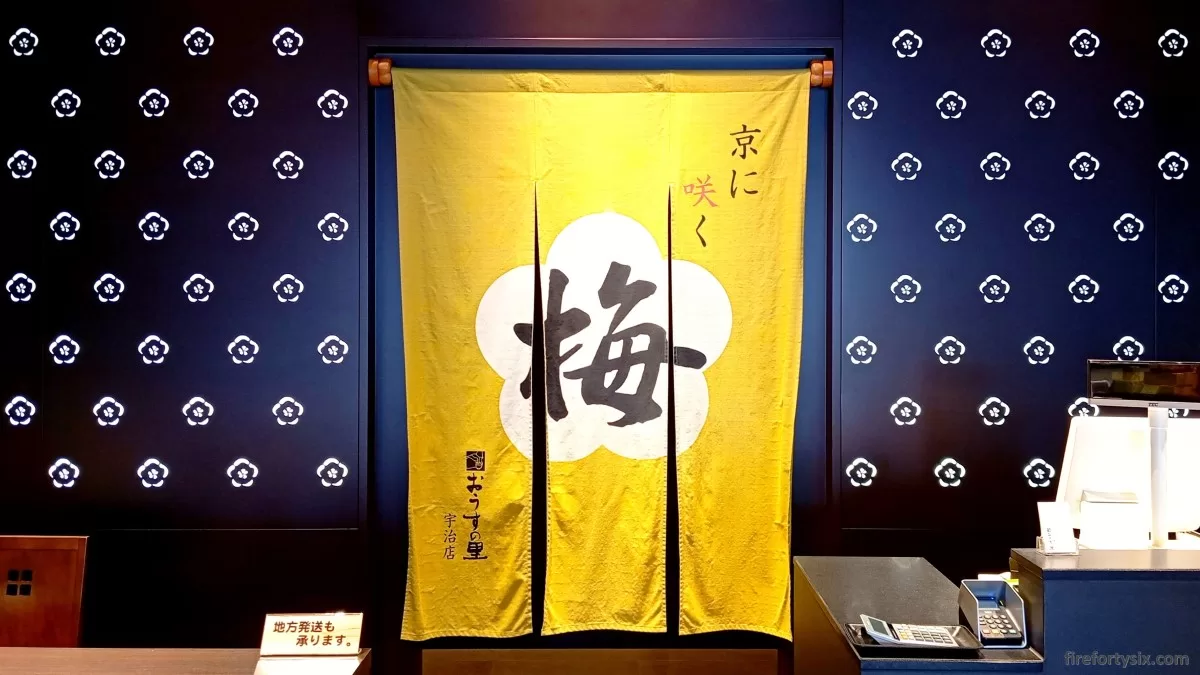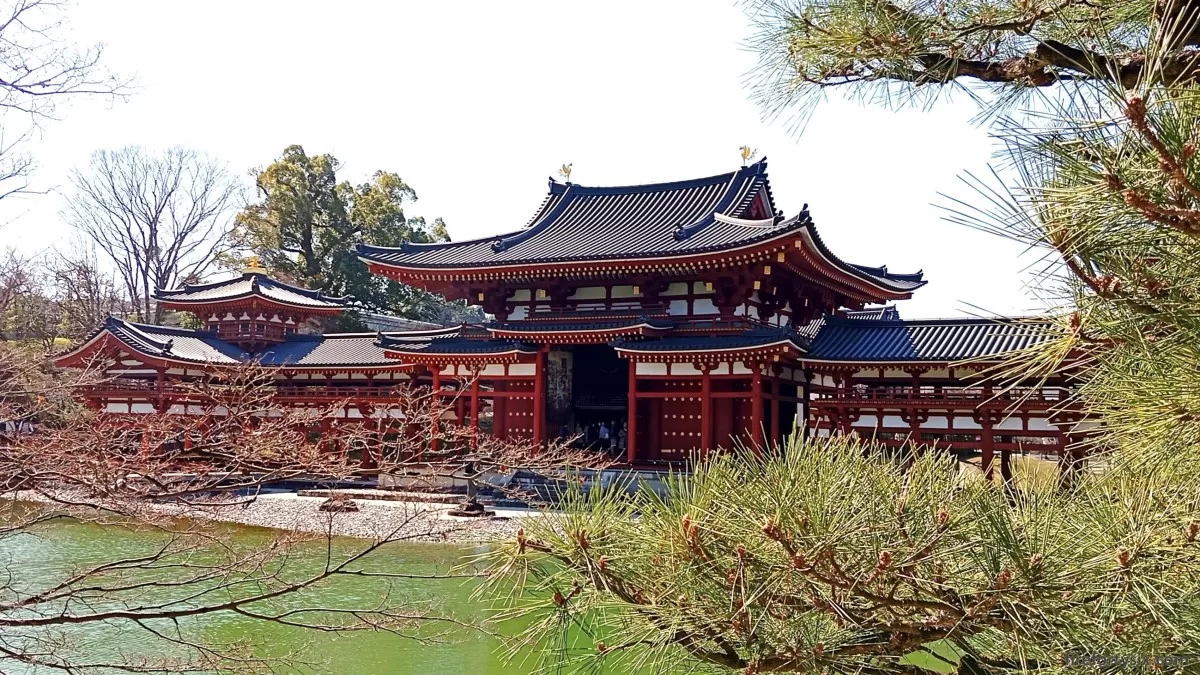Tofu is such a simple yet versatile ingredient. It can be made into so many different forms, each with its unique taste and texture.
Through millennia of refinement, Japanese chefs have honed their techniques and elevated tofu cuisine into an art form.
And there’s no better place to experience it than in Kyoto, the ancient capital of Japan.
We had a glimpse into this tradition at a tofu kaiseki at Higashiyama, and enjoyed eight different preparations over a leisurely ten course lunch.
It was one of the most memorable meals during our short stay in Kyoto; one that we’d remember for a long time to come.
Our tofu itch had been successfully scratched, and we happily continued on our Kansai food adventures by seeking out other local delights.
A couple of days later, while on a long walk from Gion to Kiyomizudera, we passed by what appeared to be a typical Japanese café serving matcha, lattes and soft-serve ice creams.
We wouldn’t have given it another thought, if not for a signboard that said “Kyo-Yuba set meal ¥2,980”.
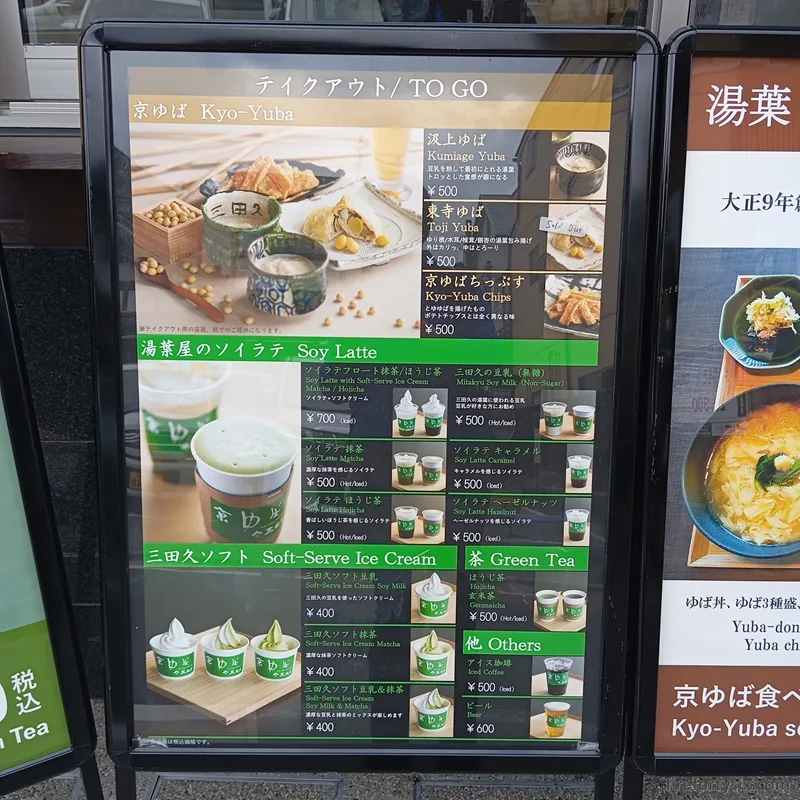
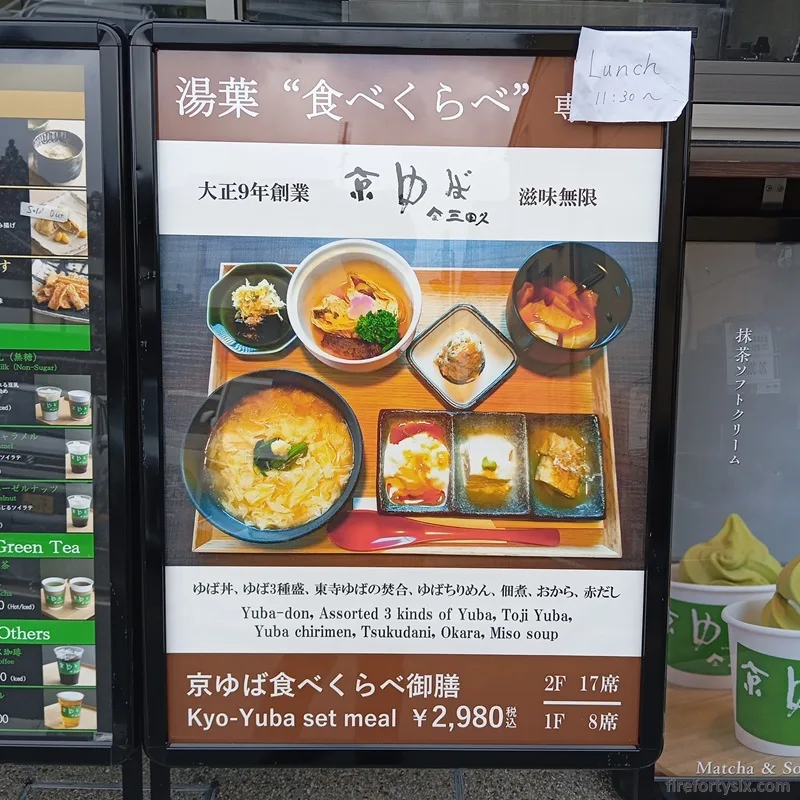
Among all the tofu derivatives, yuba is my favourite. There’s something about its soft yet chewy texture, and its concentrated yet delicate soy bean flavour that makes it so addictive.
The best way to appreciate yuba is to have it as “sashimi”, with a dash of shoyu and a blob of freshly-grated wasabi. It’s something that I never fail to order whenever I see “湯葉刺身” or “生湯葉” on the menu.
But yuba is usually relegated to a side dish, served in a small portion as just an appetiser. Now, there was a chance to have an entire meal dedicated to it, and I wasn’t about to let the opportunity pass.
We walked through the door, requested a table for two and were led upstairs to their dining hall. It was a compact and cosy space, with a bamboo and laurel green colour scheme that felt quite homely.
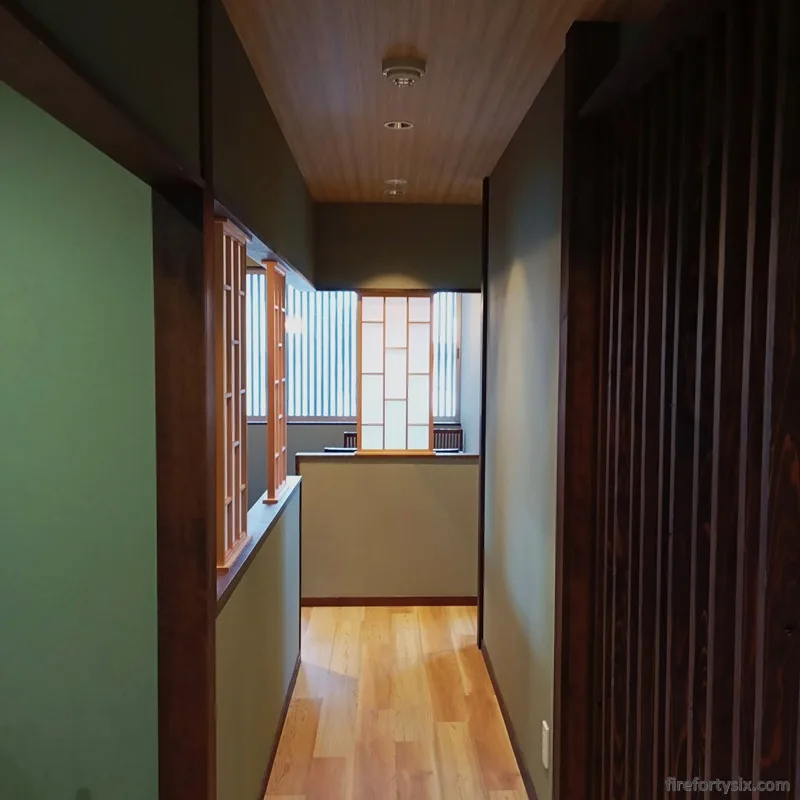
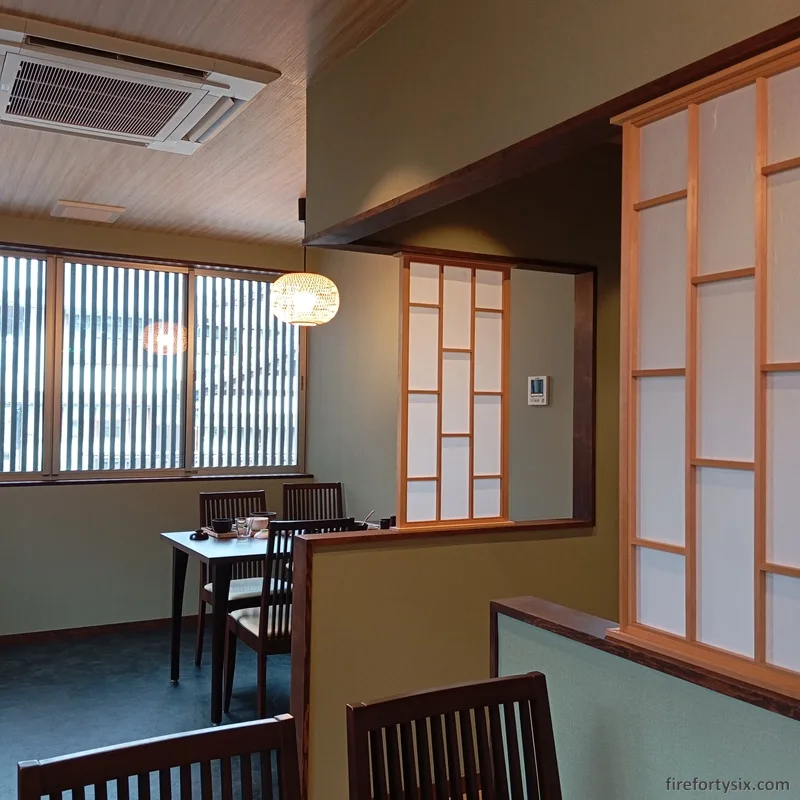
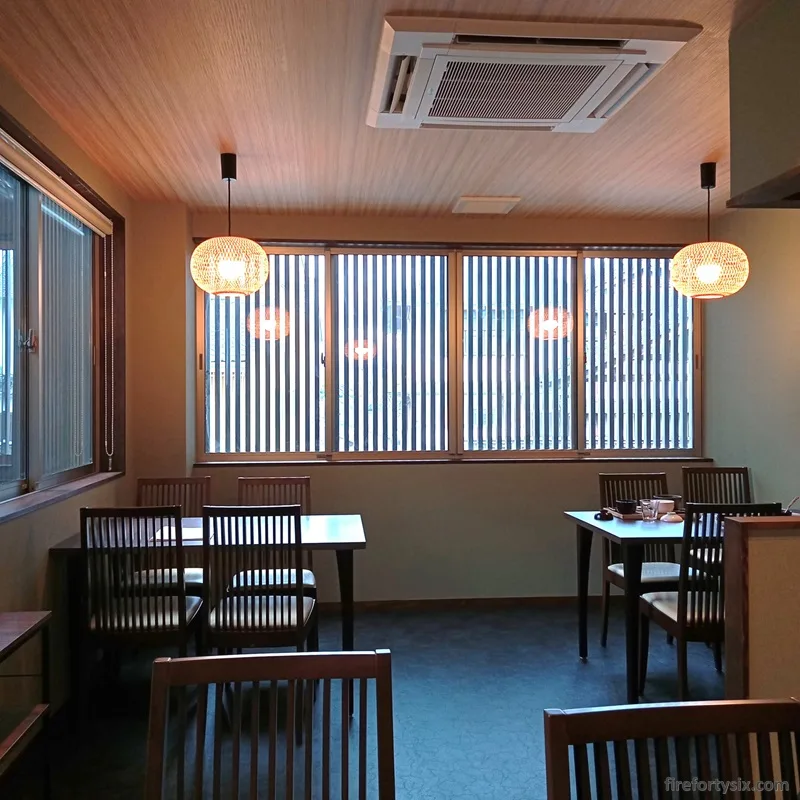
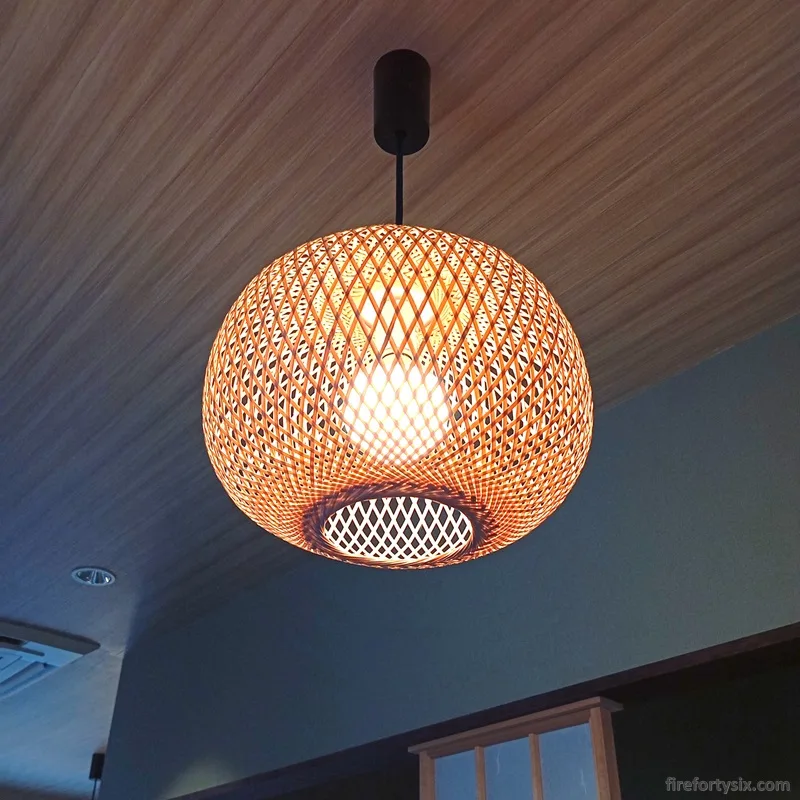
It was past the peak lunch hours and we had the whole floor to ourselves. Menus were handed to us, and we were given time to slowly peruse it by the unhurried staff.
Given that yuba was the star of the show, it was only fitting that an entire page was dedicated to explaining what it was, and how it was made.
tl;dr: “When soymilk is heated in a large pot, the lipids and proteins contained in the soybeans form a film on the surface and harden. By scooping it up, it becomes yuba.”
That was exactly what we did at Umenohana Ginza (梅の花 銀座) in Tokyo, where we had the Hikiage Yuba a.k.a. “Yuba cooked at your table”. It was as delicious as it was unforgettable.
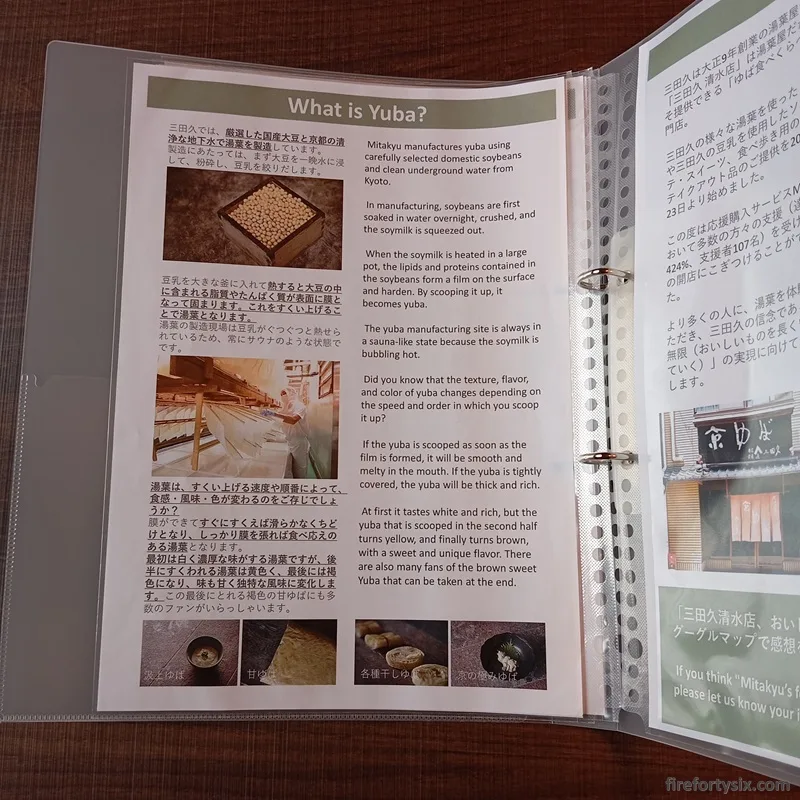
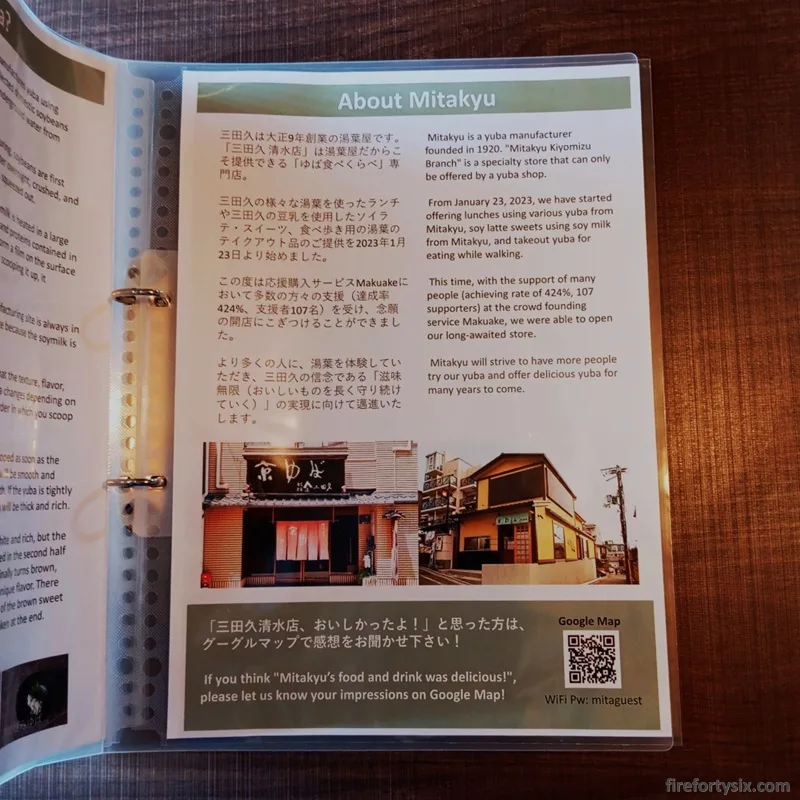
The menu also included a writeup on the restaurant itself, highlighting that Mitakyu (三田久) is a yuba manufacturer founded in 1920. It only recently opened its restaurant in January 2023 via, interestingly enough, a crowd-funding exercise.
You really can’t go wrong ordering the Yuba Lunch Special in a restaurant operated by a hundred year old yuba supplier, and that’s exactly what we did.
Three options were available: Set A with just the food (¥2,980), Set B with an additional drink (¥3,480) and Set C with both a drink and dessert (¥3,980). We chose the works.
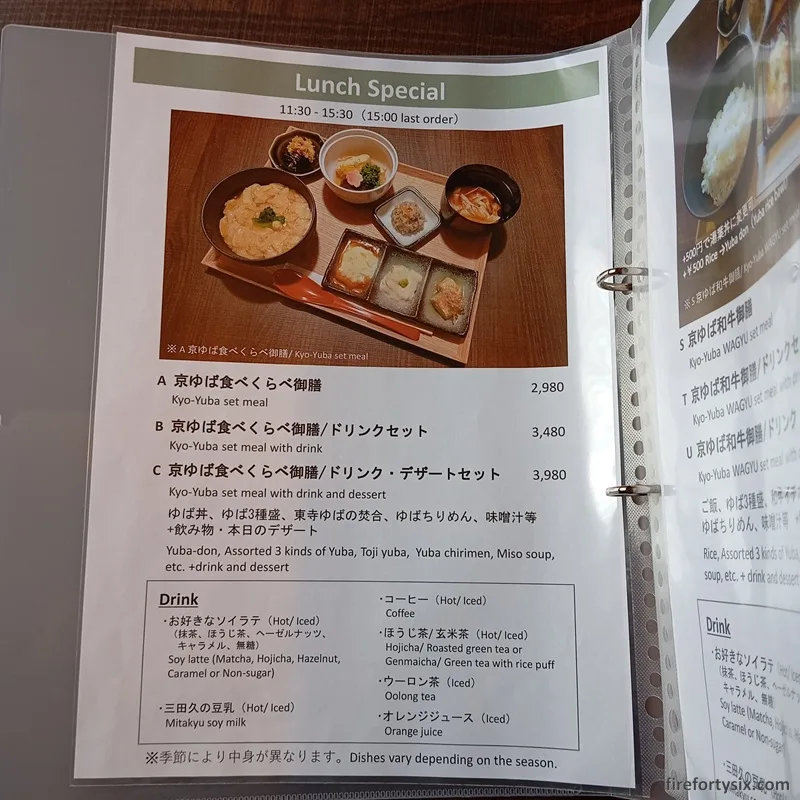
Unlike the fancy course-by-course kaiseki presentation at Rengetsujaya, our entire meal was served cafeteria-style; everything, everywhere, all at once.
The upside was that it gave us the freedom to eat what we wanted, when we wanted. But through force of habit, we started with the miso soup.
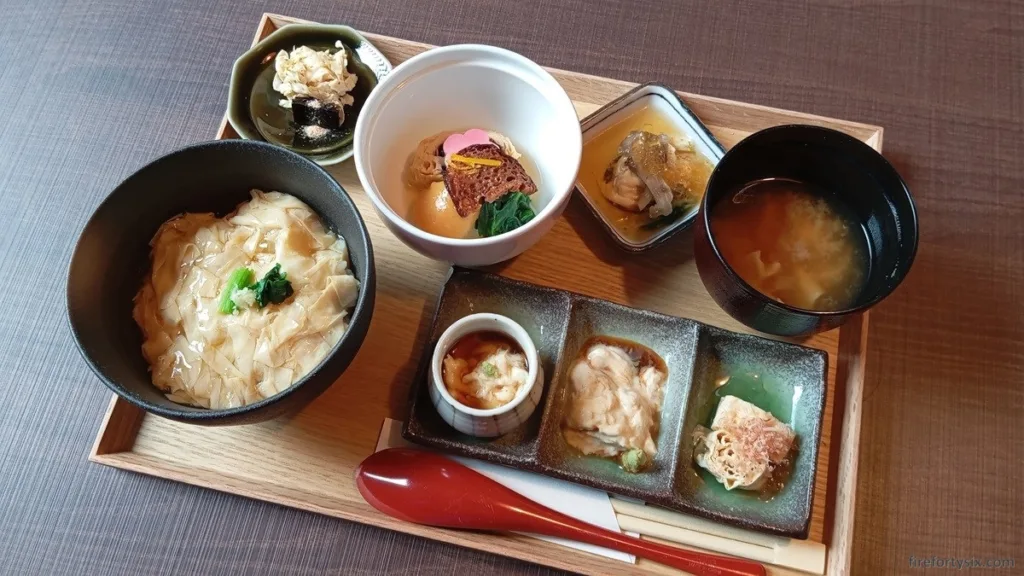
It looked plain but tasted surprisingly smokey. Instead of diced silken tofu, it came with chewy pieces of yuba. I didn’t finish my miso shiru at one go, and opted to slowly nurse it throughout the meal.
Shredded pieces of yuba paired with small rectangles of kombu was next. It looked unassuming but gave our tastebuds quite a tingle, courtesy of ground sansho pepper and whole peppercorns.
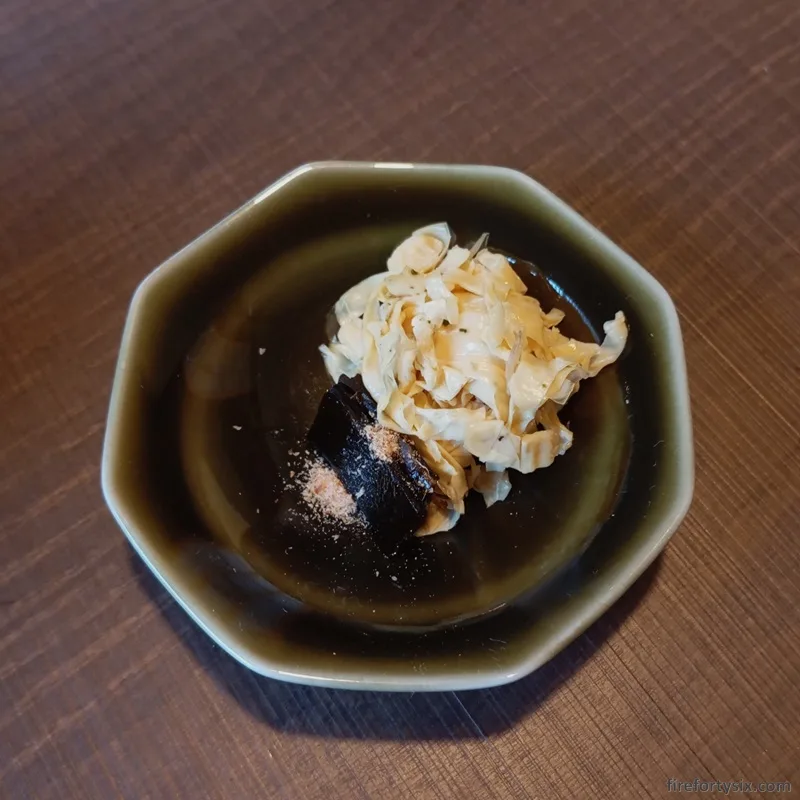
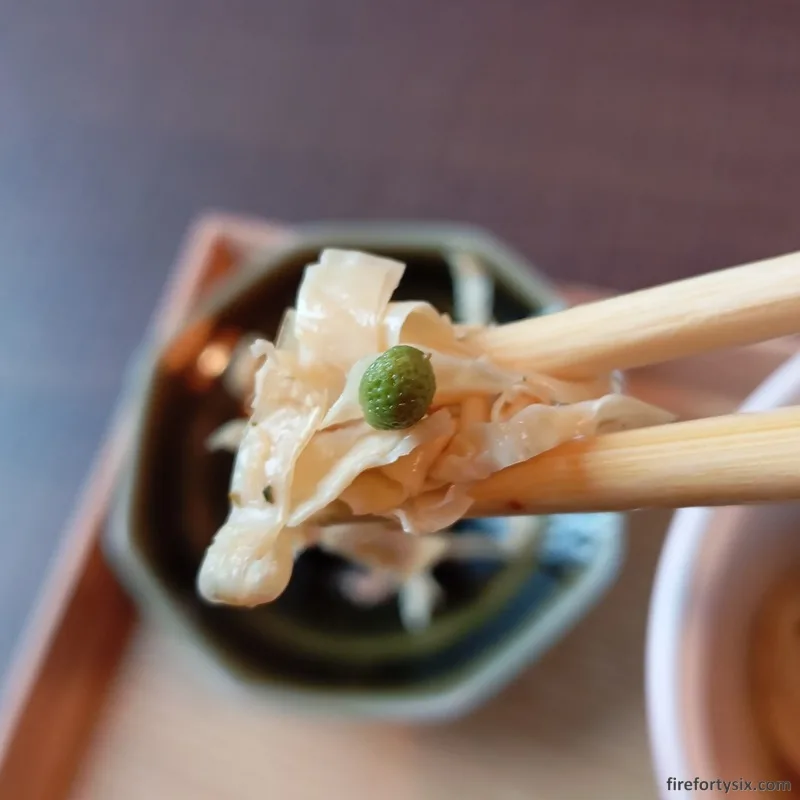
Following that was the “Assorted 3 kinds of yuba”.
Even though the yuba sashimi was placed in the middle slot, it was the first thing I picked up. Smooth, creamy and luxurious, exactly as I remembered.
To the right were firmer pieces, topped with smokey katsuobushi and a splash of delicate dashi. To the left was more nama yuba, but this time with different and richer soya sauce.
All three were good, but no prizes for guessing which was my favourite.
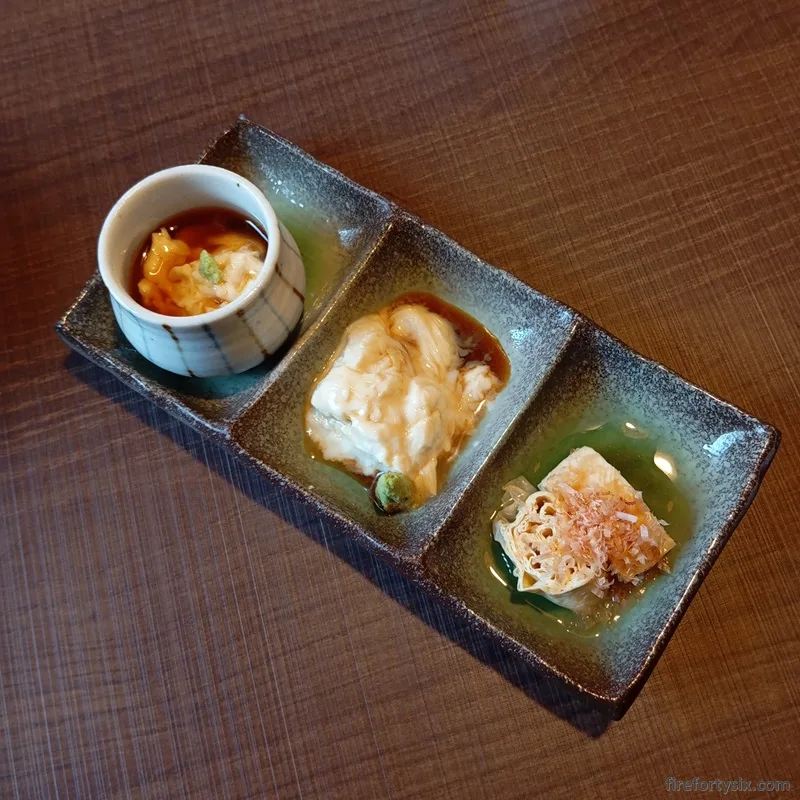
With the small bites out of the way, it was time to tackle the more substantial dishes, starting with the yuba don.
We’ve had countless Japanese rice bowls with all sorts of ingredients before, but this was the first time we were having one topped with yuba.
Coated with a lightly-seasoned glaze and garnished with greens with a pinch of grated fresh ginger, it was simple but oh so tasty.
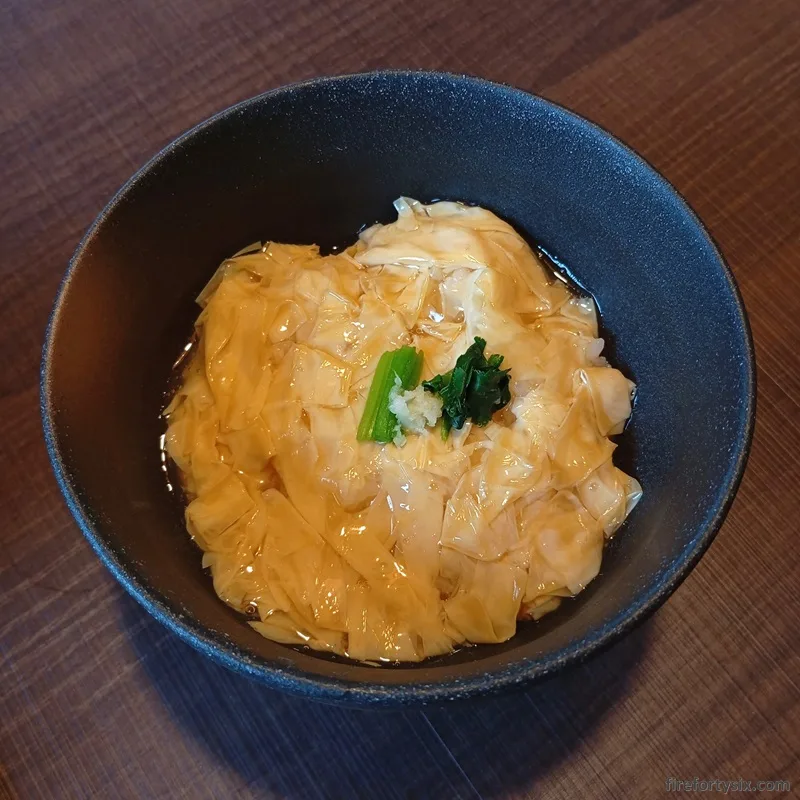
Very understated but very comforting, something I would happily eat on a regular basis and never get sick of.
Providing a flavour contrast was the yuba with maitake mushroom doused in a vinegary and citrusy (yuzu? mikan? sudachi?) goopy sauce.
I’m sure it has a more precise name, but it was goopy and it was a sauce, so that’s what I’m going with. Either way, it went really well with the yuba don.

We saved the most beautiful dish for last. I named it the “fancy bowl”, mainly because it would fit right in a Michelin-starred fine dining restaurant.
After admiring how pretty it looked, we slowly dissected it to figure out the components. The base was a boiled cauliflower floret, soft but still maintaining its structural integrity.
That was followed by a slice of yuba rolled with chunks of shitake mushroom and kombu, accompanied by blanched chrysanthemum leaves.
A sakura-shaped kamaboko and a schmear of yuzu-accented shiro miso was next on the stack, together with a slice of braised gluten and slivers of yuzu as garnish.
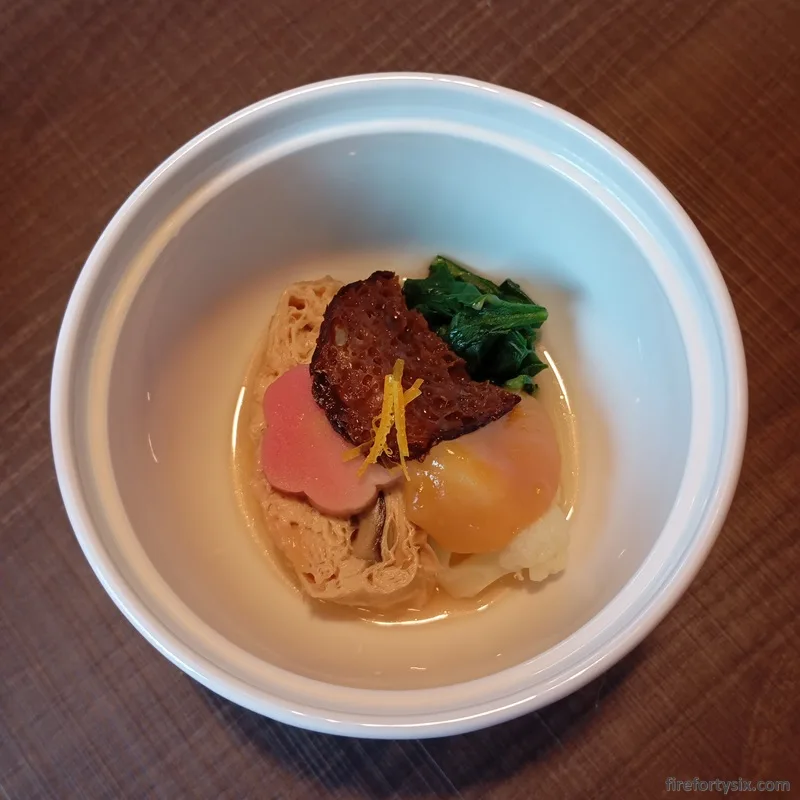
The complex interplay of tastes and textures was exciting but, at the same time, reserved. Each element made perfect sense, and every piece of the puzzle fit together in a harmonious whole.
This alone was worth the price of admission.
We scraped the bowl clean, not wanting to waste even a little piece or tiny drop of this exquisite creation. After we were done, we did the same for all the other items on our tray.
When our server saw that we were done, she served our drinks and desserts.
There were several hot and cold beverage choices including coffee, tea, juice but we went with the only one that carried their name — the Mitakyu soy milk.
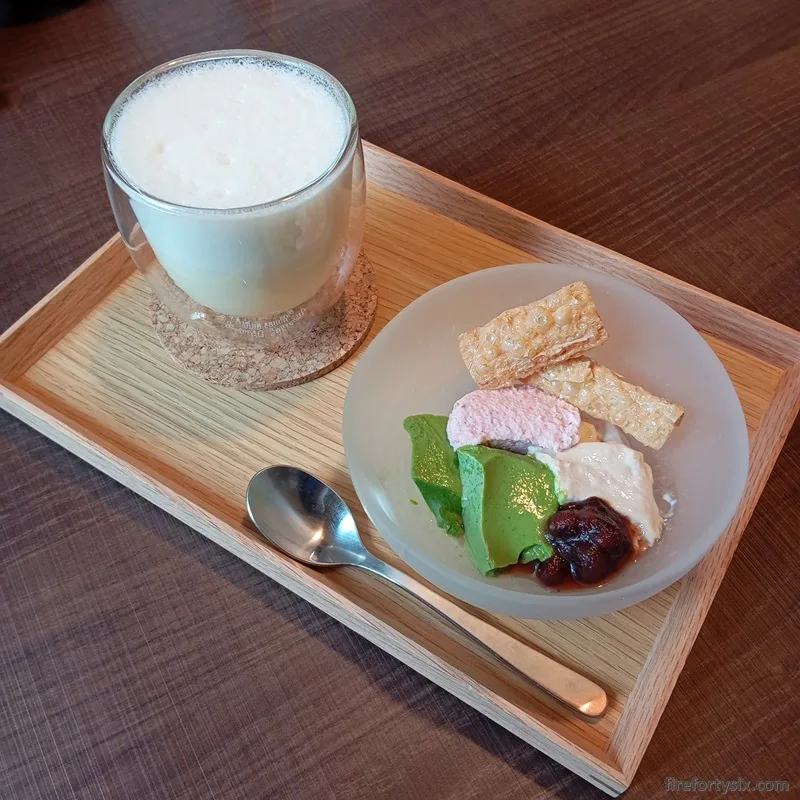
Hot and unsweetened, it was the purest expression of soymilk that we’ve ever had. If you’ve been searching for the unadulterated flavour of soybeans, this is where you’d find it.
It was a great pairing with the scoops of soy panna cotta that nestled in a small puddle of kuromitsu. The soft pudding came in three distinct flavours: au naturel, strawberry and matcha.
Completing the dessert was chunky sweetened anko and crispy lightly-salted yuba chips. The presentation was rustic, complementing its homely flavour.
As we were wrapping up, I noticed a laminated sheet that mapped each dish in the set lunch to their respective raw ingredients.
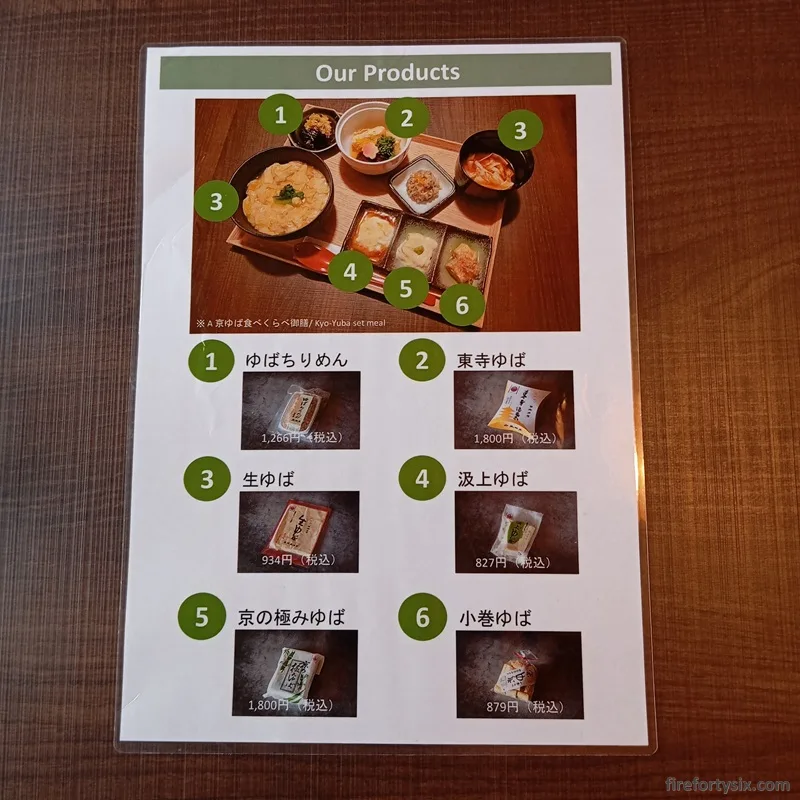
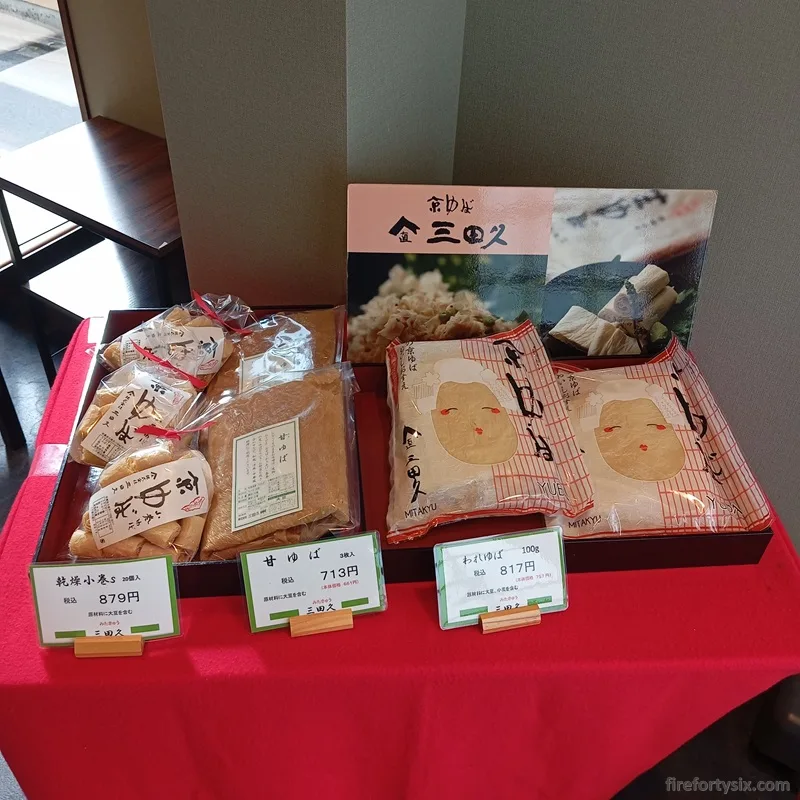
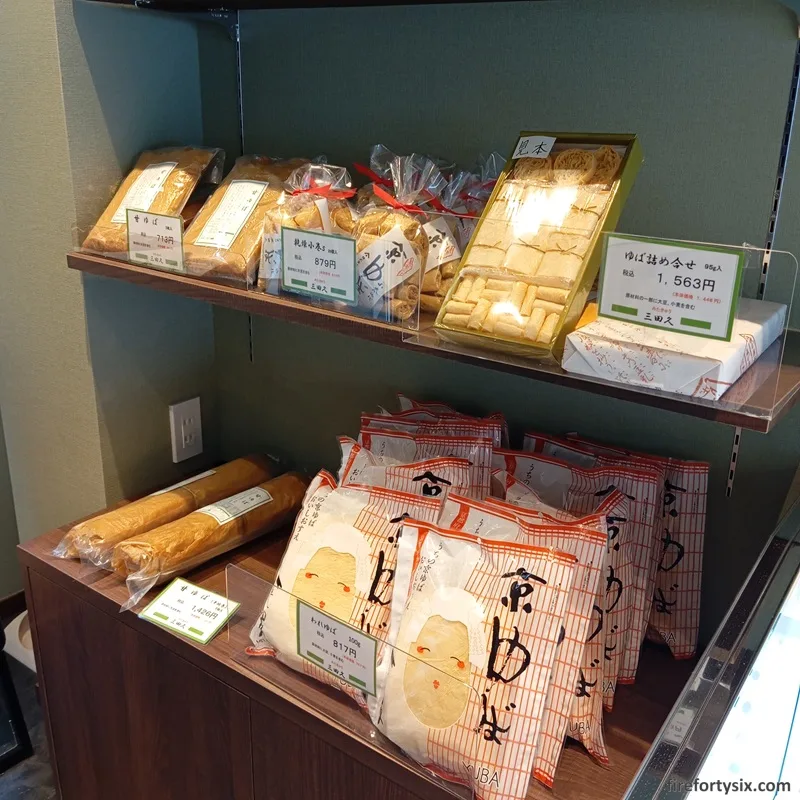
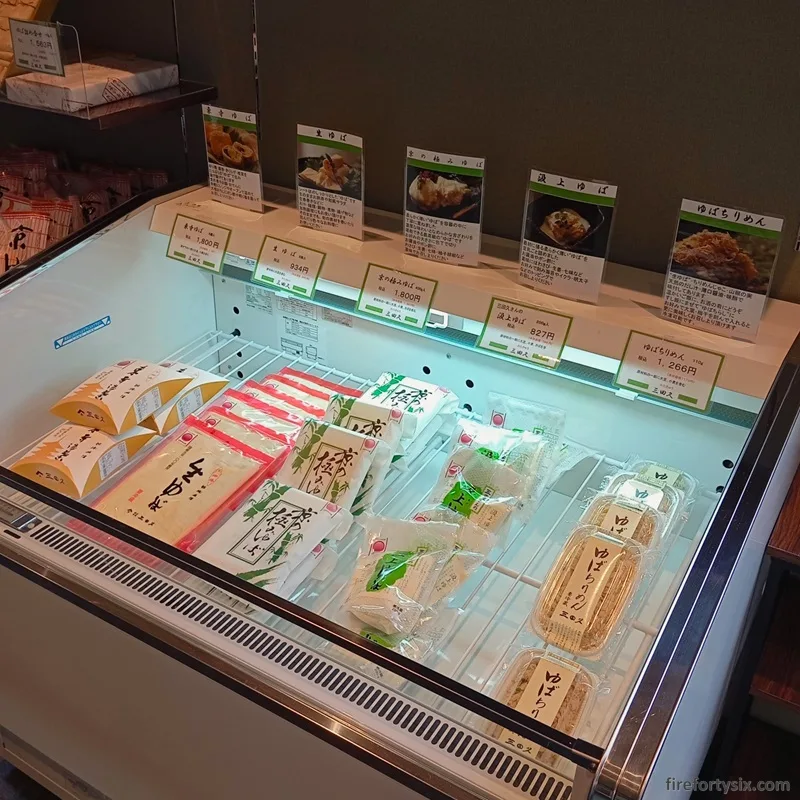
Conveniently displayed just behind the cashier on the ground floor, there were both dried products as well as fresh ones stored in a chiller.
The Wife was considering buying some back, but decided otherwise as she figured that they’d probably be crushed during our flight home.
Kyo Yuba Mitakyu is a new restaurant, which is reflected in the currently low number of reviews on both Google (4.8⭐/5.0 | 142 reviews) and Tabelog (3.12⭐/5.00 | 5 reviews).
Its rating on Google is exceptionally high, and I have no doubt that its Tabelog score will inch upwards as more and more locals discover its charm.
